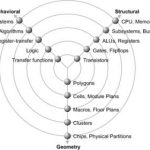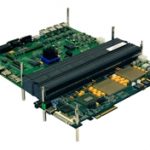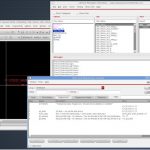Cornelia Golovanovworks at LSI Corp in Pennsylvania and is an EMI expert that provides EDA tool and methodology advise to design groups. She earned a PhD in microelectronics and radioelectricity from the Institut national polytechnique de Grenoble, and joined Lucent out of school 12 years ago. We had a chance to talk by phone about… Read More
Author: Daniel Payne
UVM/SystemVerilog: Verification and Debugging
At DAC in just three weeks you can learn about which EDA vendors are supporting the latest UVM 1.1d (Universal Verification Methodology) standard as defined by Accellera. One of those EDA vendors is Aldec, and they have a 45 minute technical session that you can register for online. Space will fill up quickly, so get signed up sooner… Read More
A Big Boost for Equivalency Checking
Thirty years ago in 1983 Professor Daniel Gajski and Kuhn created the now famous Y-Chart to show the various levels of abstraction in electronic system design:
We can still use this Y-Chart today because it still pertains to how engineers are doing their SoC designs. Along the Behavioral axis there is a need to know that each level… Read More
Prototyping Over 100 Million ASIC Gates Capacity
Most SoCs today are being prototyped in FPGA hardware before committing to costly IC fabrication. You could just design and build your own FPGA prototyping system, or instead choose something off the shelf and then concentrate on your core competence of SoC design.
Thanks to the FPGA vendors like Xilinx we now have FGPA prototyping… Read More
Is my Library or Semi IP really OK to use?
The tremendous growth in IC and SoC design complexity has now enabled engineers to place bilions of transistors on a single chip. To make that growth possible design teams resort to using libraries and semi IP provided by other groups in their company, or outside IP vendors. To lower risk, you must know that the IP being used in your… Read More
More Injustice in EDA Lawsuits
There’s a one-person EDA start-up called iSchematics.com that offers schematic capture and cloud-based simulation for both web browsers and mobile devices like the iPhone and iPad that is being sued. I’ve blogged about their EDA tools before:
… Read MoreAnalog IC Verification – A Different Approach
Analog design seems to suffer from a huge gap when it comes to testing and verification. While some of this gap is natural – after all, often the only way to verify whether a particular design is working is to look at actual simulation waveforms – it still seems like a lot can be done to bring process into this sphere of the… Read More
An AMS Seminar on May 16th
Analog and Mixed-Signal (AMS) designers are facing more challenges than ever, so where can they go to get some relief? One place is a half-day seminar scheduled for May 16th in Bridgewater, New Jersey. SemiWiki has teamed up with Tanner EDA, Abbot Labs and SoftMEMS to present topics of:
- True collaborative design enabled through
A Programmable Electrical Rule Checker
IC designers involved with physical design are familiar with acronyms like DRC (Design Rule Check), LVS (Layout Versus Schematic) and DFM (Design For Manufacturing), but how would you go about checking for compliance with ESD (Electro Static Discharge) rules? You may be able to kludge something together with your DRC tool and… Read More
Challenges of 20nm IC Design
Designing at the 20nm node is harder than at 28nm, mostly because of the lithography and process variability challenges that in turn require changes to EDA tools and mask making. The attraction of 20nm design is realizing SoCs with 20 billion transistors. Saleem Haider from Synopsys spoke with me last week to review how Synopsys… Read More




















Quantum Computing Technologies and Challenges